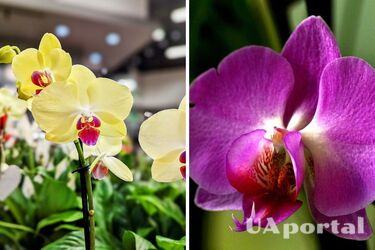Experts explain when and how to prune orchids properly

Orchids require careful attention, especially when it comes to pruning. Pruning plays a crucial role in promoting healthy growth and flowering.
By removing dead or damaged parts, as well as faded flowers, pruning an orchid encourages the plant to redirect its energy to create new growth and blooms. This is reported by Express.co.uk.
Before pruning an orchid, it is important to sterilize the cutting tools to minimize the risk of spreading disease. Clean the tools with alcohol and let them dry well before using them.
Read also: Why orchids don't bloom: a life hack to fix it
Carefully inspect the orchid and look for dead, yellow, or damaged parts, including leaves, stems, and flower spikes. These should be carefully removed with sharp, clean scissors or secateurs.
When the orchid has finished blooming, cut off the faded spikes to stimulate new growth and future blooms. Use sterile scissors to cut the thorn just above a node or bud, being careful not to damage the surrounding tissue.
The ideal time to prune an orchid is after it has finished flowering. This allows the plant to recover from the flowering cycle and redirect its energy to new growth.
Avoid pruning during the active growing season as this can interfere with the development of the plant. In general, it is best to prune orchids after they have finished blooming, usually in late spring or early summer.
As a reminder, we have already written what is forbidden to do when growing an orchid.
If you want to get the latest news about the war and events in Ukraine, subscribe to our Telegram channel!
